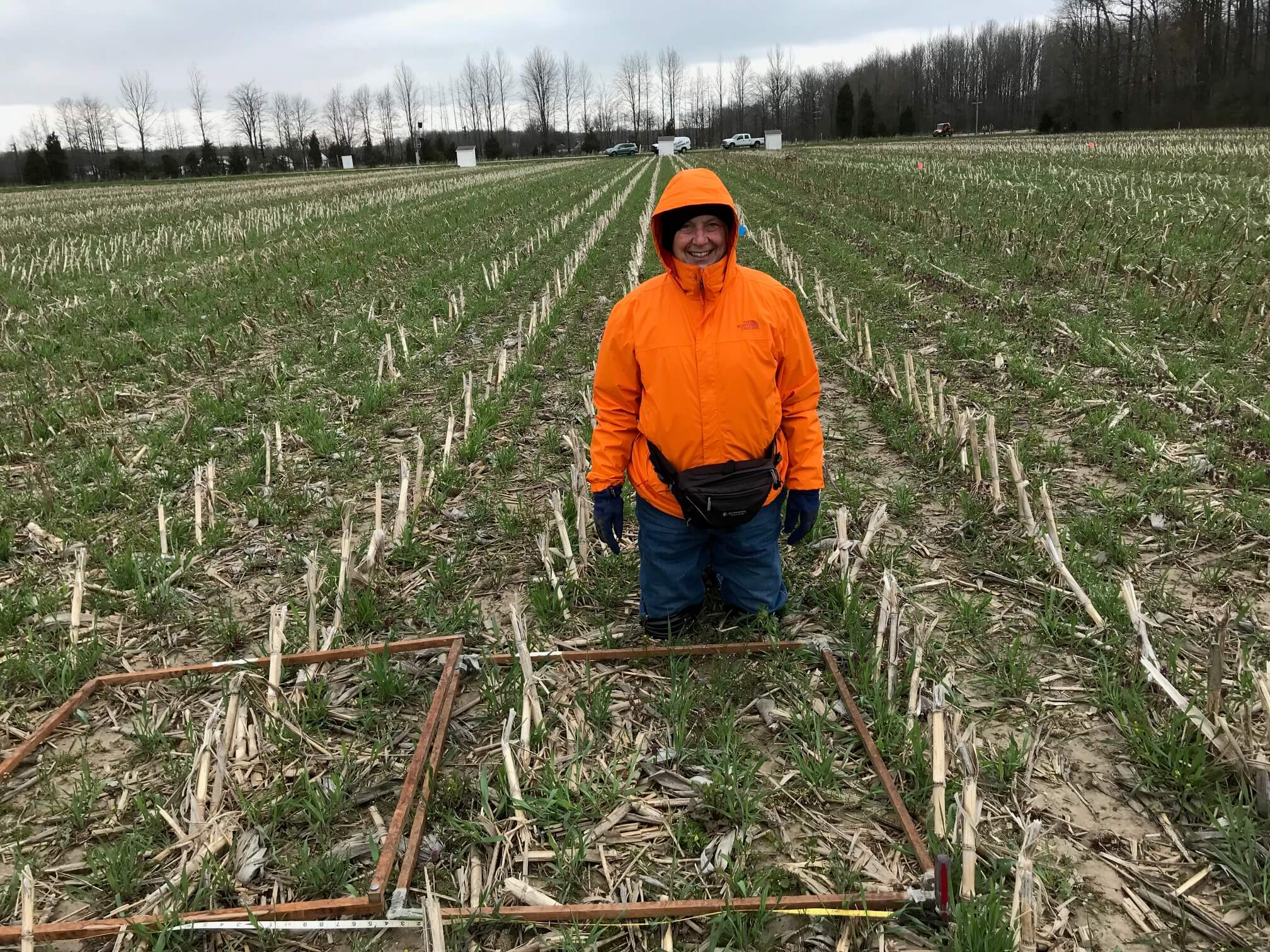"I
was the new kid on the block when this project started in 1982,” said Eileen Kladivko, professor of agronomy at Purdue University. “I knew almost nothing about drainage, but that quickly changed.”
Kladivko began her career at Purdue University as an assistant professor of agronomy. Little did she realize that for the next 35 years, she would work on a water drainage project that she initially learned about during her interview.
In the 1970s, farmers began installing modern plastic tiles in fields to assist with water flow and drainage. Farmers in southern Indiana requested a tile drainage study to see if the new plastic tile would work on their poorly drained, highly erosive silt loam soil. Around the same time, the Southeast Purdue Agricultural Center (SEPAC) was established in Jennings County, Indiana.

Jerry Mannering, soil and water management, Ron Wheaton, agriculture and biological engineering, and Edwin Monke, agriculture and biological engineering (all now deceased), obtained state funding to lead the research project at SEPAC. The project was supported in part by the Purdue Agricultural Research Programs and the USDA National Institute of Food and Agriculture.
“My mentors involved me right from the start and it was a great opportunity to learn from experienced soil and water scientists and engineers. Eventually, they all retired and I became the “leader” of the project,” replied Kladivko.
The study’s key takeaways show that installation of tile drainage is a good long-term investment in the field. Drainage improves timeliness of fieldwork by 1 to 15 days, corn yields, cover crop growth and it enables other conservation practices to work better.
Like all field research projects, Kladivko and her team came across many obstacles. Automatic equipment broke down, got knocked out by lightning and chewed up from rodents and deer. The team had to be persistent in finding new methods to mark buried tile drains, a job that is now easier with GPS technology.
Kladivko recalled many surprises along the journey too.
“For me, one of the biggest surprises outside of the research was the crawdads and their castles,” she said.
When she began working at SEPAC, she asked one of her senior colleagues about the large soil mounds in the fields. She was skeptical when he replied that they were crawdads, and wouldn’t believe him until he instructed her to lift a mound and drop a pebble into the hole. She recalls hearing the plop as the pebble dropped into the water table.
“That shows you how wet those fields truly were before tile drainage – wet enough for crawdads to live! Now that we’ve installed tile, there are hardly any crawdads except for in the undrained control.”
While this project has ended, she plans to continue writing scientific papers about the experiments, specifically about water quality and flow aspects. She also has started conversations with newer faculty about new studies regarding remaining and different questions that arose during the study.
Kladivko expressed her gratitude for all who contributed to the project including the SEPAC farm crew, graduate students, post-docs, faculty colleagues and Natural Resources Conservation Service colleagues.
“I applaud Purdue for initially supporting this program and keeping it funded for so long. I also applaud the Purdue Agriculture Centers for maintaining these long-term studies at basic levels,” she said. “Long-term studies are very valuable because of the large amount of data that is collected and the incredible knowledge we can gain from that data.”
To view Kladivko’s executive summary and 3-part publication series about the long-term study, visit the Purdue Extension Education Store.






